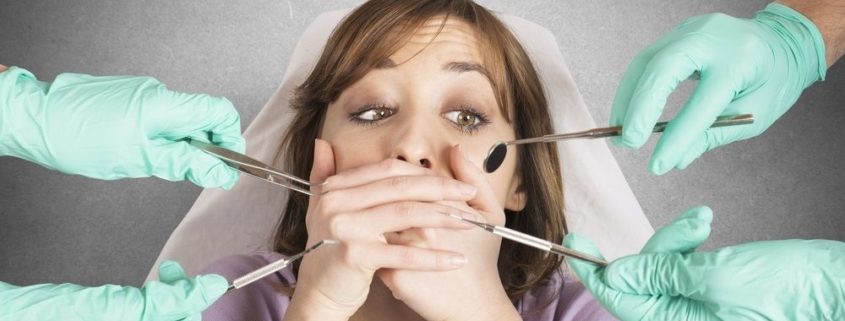A guide to dental tools
The sound and appearance of dental tools seem downright frightening. When you walk into a dentist’s office, the whirr of a drill or the sharp hook of a device you can’t even describe can send chills down your spine. It can even cause some of us to fear the dentist, which makes for an unpleasant trip each time you have to go. However, there are ways to try to remedy the situation. By knowing what each tool does, you might be less anxious every time the dentist goes near your mouth. Here’s a brief guide to help you understand basic dental tools, and assist in calming your nerves and putting your mind at ease.
Mouth Mirror
This is probably the least scary of all the dental instruments, but it’s important nevertheless. The mouth mirror is a small mirror attached to a metal stick. The purpose of this instrument is two-fold. First, it allows the dentist to view places in the mouth that ordinarily would take an act of physical contortion to see. This makes it easier to find tooth decay or other potential oral problems that would otherwise go undetected. Second, it gives the dentist an easy way to move your tongue or push on the inside of your cheek without doing so with their hands.
Sickle Probe
A sickle probe, also known as a dental explorer, is one of the scarier dental tools, but it’s beneficial in finding signs of cavities or periodontal (gum) disease. This instrument has a long handle with a sharp-looking hook on the end. This is primarily used to explore the pockets between teeth, while also scraping away tartar and plaque. If you have a visible cavity, the dentist may also use the sharp tip to investigate. It may look medieval, but it’s a necessary tool for preventative dentistry.
Scaler
While a sickle probe is effective at removing small areas of plaque and tartar, scalers are more essential for the removal of a greater buildup. Most patients who require scaling have more significant issues with periodontal disease, but everyone experiences some form of plaque buildup. When you eat or drink, tiny particles such as sugars and acids stick to your teeth, and bacteria forms. This harmful bacteria eventually causes tooth decay, and while brushing and flossing help remove most of this plaque, additional removal is sometimes required. A scaler scrapes off excess plaque, and while it’s not necessarily comfortable, it will prevent you from losing your teeth to decay.
Saliva Ejector or Suction Device
Unlike some other dental tools, a saliva ejector is one of the easier to deal with, and many times, the source of a bit of comedy. When a dentist is exploring your mouth, they often need a dry surface. A suction device is a long tube attached to a vacuum that removes saliva from your mouth. You may hear some vacuum sounds and feel the ejector stick to your cheek or tongue, but it’s nothing that should startle you. During treatments that involve the use of water, you may be regularly instructed to close your mouth in order to help the device clear the accumulated water.
Dental Drill
Perhaps the most feared of all tools is the dental drill. The sound of it is enough to send some patients into a frenzy. However, it’s the most effective way to remove tooth decay before filling a cavity. This electric drill spins at over 250,000 rpm while shooting water into your mouth. If the drill didn’t administer water, it would get hot enough to damage the tooth. While the dental drill can feel uncomfortable because of vibrations on your teeth, it’s usually not painful when you receive a local anesthetic.
Dental Syringe
Speaking of anaesthetics, the dental syringe is what delivers the numbing blow to your mouth. They’re a bit longer than a typical needle or syringe so the dentist can hit the correct spot when administering the anaesthetic. As with a shot, the initial injection may cause discomfort for a moment, but this is quickly numbed by the anaesthetic. If you’re a bit squeamish around needles, it’s probably in your best interest not to look at it, but it happens so quickly that it’s nothing you should fear. Many dentists also administer a topical anaesthetic prior to using the syringe, in order to dull the initial needle prick.
Molds
If you need a crown, cap, or mouthguard, your dentist may have to get a mold (or mould) of your teeth. These molds are nothing to fear, however; they’re small frames filled with a soft substance and are placed in your mouth. When you bite down, it provides a perfect mold of your teeth. The molding material doesn’t taste great, but it’s nothing you can’t tolerate for a few seconds, and some dentists even have flavored versions available for kids of all ages.
Now that you know a bit more about the tools that go into routine dental practices, you don’t have to hide under a blanket of fear – or under any blanket for that matter. In the hands of your dental professionals, these tools are harmless, and the ones that sound or look menacing are typically offset by something, such as an anesthetic, that will help you to remain comfortable. You might even impress your dentist by showing how much you know about each instrument.



